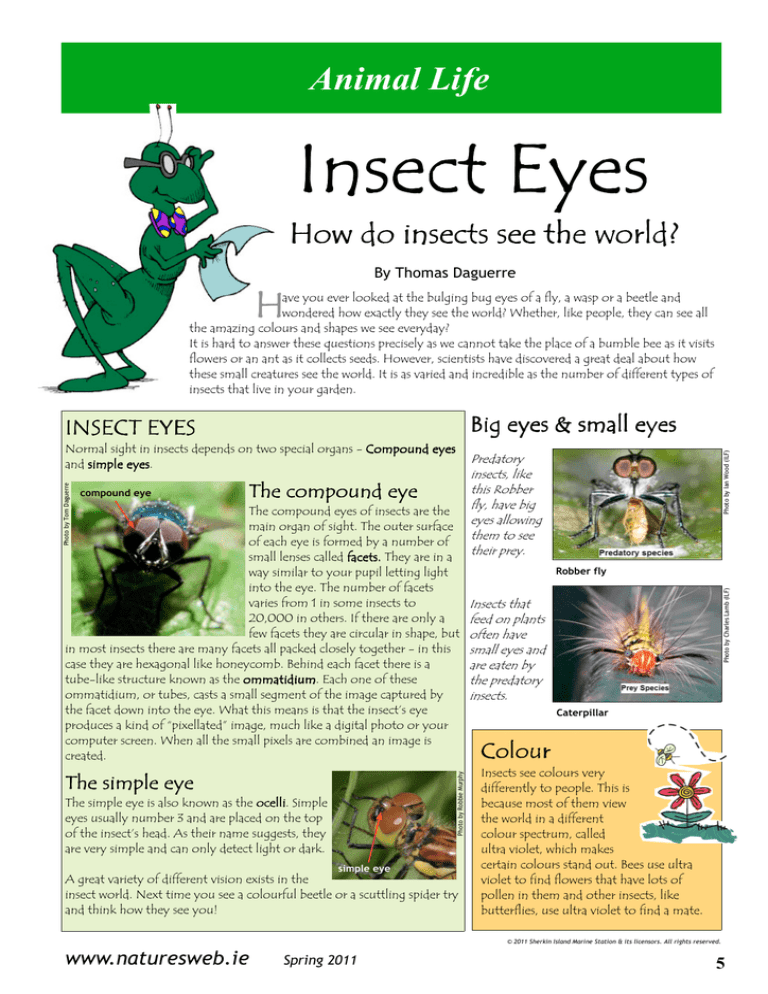
Animal Life
Insect Eyes
How do insects see the world?
By Thomas Daguerre
H
ave you ever looked at the bulging bug eyes of a fly, a wasp or a beetle and
wondered how exactly they see the world? Whether, like people, they can see all
the amazing colours and shapes we see everyday?
It is hard to answer these questions precisely as we cannot take the place of a bumble bee as it visits
flowers or an ant as it collects seeds. However, scientists have discovered a great deal about how
these small creatures see the world. It is as varied and incredible as the number of different types of
insects that live in your garden.
compound eye
The compound eye
The compound eyes of insects are the
main organ of sight. The outer surface
of each eye is formed by a number of
small lenses called facets. They are in a
way similar to your pupil letting light
into the eye. The number of facets
varies from 1 in some insects to
20,000 in others. If there are only a
few facets they are circular in shape, but
in most insects there are many facets all packed closely together - in this
case they are hexagonal like honeycomb. Behind each facet there is a
tube-like structure known as the ommatidium.
ommatidium Each one of these
ommatidium, or tubes, casts a small segment of the image captured by
the facet down into the eye. What this means is that the insect’s eye
produces a kind of “pixellated” image, much like a digital photo or your
computer screen. When all the small pixels are combined an image is
created.
Photo by Robbie Murphy
The simple eye
The simple eye is also known as the ocelli.
ocelli Simple
eyes usually number 3 and are placed on the top
of the insect’s head. As their name suggests, they
are very simple and can only detect light or dark.
simple eye
A great variety of different vision exists in the
insect world. Next time you see a colourful beetle or a scuttling spider try
and think how they see you!
Predatory
insects, like
this Robber
fly, have big
eyes allowing
them to see
their prey.
Robber fly
Photo by Charles Lamb (ILF)
Photo by Tom Daguerre
Normal sight in insects depends on two special organs - Compound eyes
and simple eyes.
eyes
Photo by Ian Wood (ILF)
Big eyes & small eyes
INSECT EYES
Insects that
feed on plants
often have
small eyes and
are eaten by
the predatory
insects.
Caterpillar
Colour
Insects see colours very
differently to people. This is
because most of them view
the world in a different
colour spectrum, called
ultra violet, which makes
certain colours stand out. Bees use ultra
violet to find flowers that have lots of
pollen in them and other insects, like
butterflies, use ultra violet to find a mate.
© 2011 Sherkin Island Marine Station & its licensors. All rights reserved.
www.naturesweb.ie
Spring 2011
5

